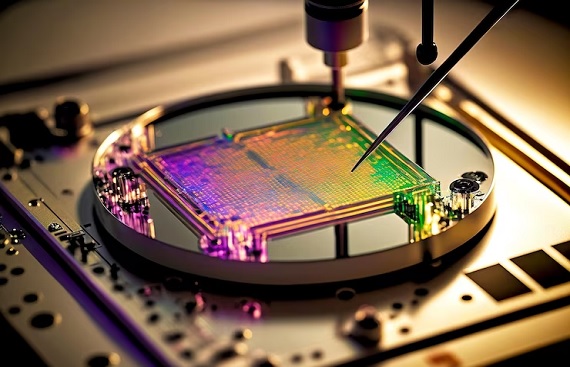In a groundbreaking development at the intersection of quantum mechanics and material science, researchers from Pohang University of Science and Technology (POSTECH) and the National Institute for Materials Science (NIMS) have shattered barriers in quantum state control using bilayer graphene. This cutting-edge research, detailed in the latest issue of Physical Review Letters, marks a significant leap forward in the quest for advanced quantum computing technologies.

Key Discoveries Unveiled:
-
Andreev-Bound States Unleashed:
- Imagine a new breed of quantum states—Andreev-bound states—emerging within bilayer graphene Josephson junctions. These states, pivotal for supercurrent mediation, have been meticulously manipulated using gate voltages, as revealed by the collaborative efforts of Professors Gil-Ho Lee and Gil Young Cho from POSTECH, alongside Dr. Kenji Watanabe and Dr. Takashi Taniguchi from NIMS.
-
The Quantum Mechanics Behind:
- The crux lies in the interplay between the conduction channel length and the superconducting coherence length. This delicate balance dictates the number of energy levels within the Andreev bound states, crucial for the operational dynamics of Josephson junctions. Short or long junction limits define these states, influencing electrical properties profoundly.
-
Gate Voltage Dynamics:
- Leveraging the power of gate voltage, researchers dynamically controlled the superconducting coherence length and the energy dispersion of bilayer graphene. This real-time manipulation was made possible through advanced tunneling spectroscopy techniques, ensuring empirical results aligned seamlessly with theoretical predictions.
Future Prospects:
In pushing the boundaries of quantum state control to unprecedented levels, this breakthrough promises transformative applications across various domains. From enhancing quantum computing capabilities to refining high-precision quantum sensors, the implications are vast and far-reaching.
Geon-Hyoung Park, lead author of the study and researcher at POSTECH’s Quantum Information Device Research and Education Center, expressed optimism about the findings. “We’ve observed Andreev bound states in conditions previously unseen, opening avenues for tailored applications in quantum technologies,” Park affirmed.
Funding and Acknowledgments:
The study received generous funding from diverse sources including the National Research Foundation of Korea, Samsung Electronics, and the Institute for Basic Science, underscoring the collaborative and forward-looking nature of quantum research.
Citation:
Park, G.-H., et al. (2024) Andreev Bound States in Bilayer Graphene Josephson Junctions from Short to Long Junction Limits. Physical Review Letters. doi.org/10.1103/physrevlett.132.226301.

Immanuel Matthew is an experienced journalist with a passion for delivering accurate and timely news updates. As a seasoned professional at dynews.net, Immanuel Matthew ensures that every story meets the highest standards of journalistic integrity and clarity. Matthew brings insightful reporting to readers, covering a wide range of topics with depth and precision.
